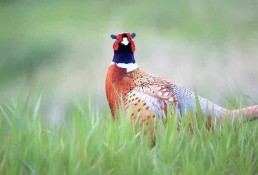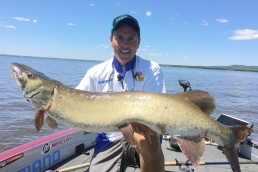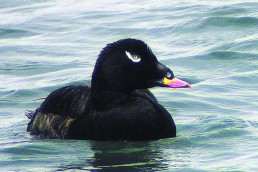PF Winter Pheasants Report for 2016
SHARE THIS POST
Spring weather has a huge impact on pheasant populations, because cold, wet spells during crucial periods can wipe out large numbers of vulnerable chicks. Still, habitat conditions and general population levels have a lot to say about hunting prospects this fall.
Even with variables that won’t sort themselves out for a while, we present the best information we have that can help predict how good the pheasant hunting might be, when you lace ‘em up and turn the dog loose in October and beyond…
Illinois
Pheasant numbers are holding strong in areas with good habitat, says Aaron Kuehl, Pheasants Forever’s conservation director for Illinois. A fairly mild winter had little impact on pheasants in the state, Kuehl says, but habitat loss remains a chief concern in the Land of Lincoln.
“Beginning in 2008, habitat loss began to accelerate across Illinois,” he says, “but the pendulum is starting to swing the other way as commodity prices soften and conservation payments remain competitive. Interest in conservation programs is certainly up.”
This includes the CP42 pollinator habitat initiative, Kuehl says, and those projects implemented last year will start to pay dividends this summer. “Any time you have an influx of acres enrolled in a program, it takes two to three years before you start to see the birds respond, and I think that will be the case here in Illinois,” says Kuehl. “The introduction of that habitat will most certainly begin to help localized pheasant populations this summer during the nesting and brood-rearing seasons.”
Iowa
The winter of 2015-16 across Iowa was one of extremes, with a pattern of heavy snow and cold in the northwest corner of the state moderating to mild temperatures and little to no snow cover in the southeast. Todd Bogenschutz, upland game biologist with the Iowa Department of Natural Resources, says that the impact of winter on pheasant mortality will vary just as much.
“We may have had some above-normal overwinter hen loss in those areas hit with snow, but in areas where there was virtually no snow cover, the hen survival should be fantastic,” says Bogenschutz. “We are forecasted to have a warm spring with normal precipitation, and if that happens, we should see a bump in birds.”
Bogenschutz estimates that hunters in Iowa harvested around 400,000 roosters last fall, marking a vast improvement from just five years ago when the harvest dipped to just above 100,000. The return of favorable weather conditions triggered the recovery, but the presence of habitat made the tremendous response from pheasants possible. “We have 1.6 million acres of CRP in Iowa, and there is a lot of interest in the Pheasant SAFE and pollinator programs,” says Bogenschutz. “With Mother Nature helping us out a bit, the habitat we have is producing some birds.”
Michigan
Michigan may not receive billing as a top pheasant destination, but the state ranks in the top 10 for pheasant harvest in the country. Al Stewart, upland game bird specialist and program leader for the Michigan Department of Natural Resources, says the conditions are right for the state to remain in that position. “We had strong production in Michigan in 2015 and those birds are now coming out of the winter in good shape thanks to mild weather conditions,” Stewart says.
The past decade has been tough on Michigan’s pheasants, Stewart explains, based on habitat availability and weather. There isn’t much the Michigan DNR can do about Mother Nature, but Stewart says the state’s Pheasant Restoration Initiative is helping put habitat on the ground through the Conservation Reserve Program (CRP), Conservation Reserve Enhancement Program (CREP) and State Acres for Wildlife Enhancement (SAFE).
“Over the course of the last five years we’re starting to see a slow recovery, and so much of the improvement is generating from the additional acres of habitat,” says Stewart. “We’re pretty optimistic about where we’re at right now.”
Minnesota
Minnesota’s pheasant hunters were happy to receive last summer’s roadside pheasant surveys, which indicated a 33-percent increase across the state, and the good news continued to roll in over the winter and into spring. Nicole Davros, upland game project leader with the Minnesota Department of Natural Resources, says mild weather helped boost overwinter survival throughout much of the state’s traditional pheasant range.
“We really only had a two-week window where deep snow and cold temperatures started to create situations where pheasants were desperate for food,” says Davros. “Surprisingly, there was little wind to blow open fields, too, but while I’m sure we lost some birds through the winter, we’re coming into spring in pretty good shape.”
Are you enjoying this post?
You can be among the first to get the latest info on where to go, what to use and how to use it!
In recent weeks, Davros has been leading crews from the DNR to outfit hen pheasants with radio transmitters as a part of a research project, and she has been happy with the rooster-to-hen ratio encountered while in the field. The big question now is what the weather will do in the coming weeks. “We’ve been a little wet so far this spring with rain and snow, so a drying trend would help,” says Davros. “But overall there are a lot of reasons to be optimistic in Minnesota.”
Missouri
In 2015, an abundance of fallow acres created nearly ideal brood-rearing cover throughout much of Missouri’s pheasant range in the northern three tiers of counties, as well as the Missouri River lowlands in the southeastern corner of the state. The resulting strong pheasant production should carryover into this year’s nesting season, says Dave Hoover, small game coordinator with the Missouri Department of Conservation. “We experienced a mild winter with little snowfall and few periods of extremely cold temperatures,” says Hoover. “Our hen pheasants should be in fairly good shape.”
Habitat conditions vary across the state, Hoover says, as a pattern of dry weather has settled across some areas. Hoover says the quality of habitat varies, too, because there has been a lot of disturbance on ground enrolled in the Conservation Reserve Program, either through work required due to reenrollment, enhancements or management.
“But where you find good habitat, you’ll find populations of pheasants that are stabilizing or growing,” says Hoover. “It is too early to tell exactly what this year’s nesting season will bring, but we hope to see those bird numbers continue to improve. If we stay in a dry pattern, it won’t be as good as if we get some precipitation.”
North Dakota
A mild winter across much of North Dakota should help continue an improving trend in the state’s pheasant population, according to Rachel Bush, Pheasants Forever’s state coordinator. Last summer’s roadside pheasant counts showed a 30 percent increase across North Dakota, and Bush believes that overwinter mortality should be average to below-average in the state’s primary pheasant areas.
“There were more birds heading into winter and more birds coming out of winter than normal, so I think the outlook is pretty favorable,” says Bush. “Bird numbers in the southwest corner of the state were particularly good last fall, and I expect the pheasant population in that area to continue to be very strong, minus any significant weather events this spring and summer.”
Habitat loss remains a chief concern in North Dakota, though Bush says the state’s landowners showed a renewed interest in the Conservation Reserve Program during the recent general sign-up. “There should be some grass going into the ground this year, which will benefit nesting and brood-rearing habitat in the coming years,” says Bush. “And there are still areas of good habitat remaining in the state, so if we can get some cooperation from Mother Nature we should be looking at another strong year of pheasant production in North Dakota.”
Ohio
Although Ohio’s pheasant population has been on a gradual decline, there are reasons to be optimistic for 2016, according to Seth Rankin, a Pheasants Forever Farm Bill biologist in the state. Heading into spring, Rankin says that overwinter mortality had little impact on pheasant numbers, thanks to little in the way of severe winter weather, and there appears to be adequate moisture to help generate growth of nesting cover.
Rankin also credits the state’s nine Pheasants Forever Farm Bill biologists for helping build momentum in several vitally important conservation programs like the Conservation Reserve Enhancement Program (CREP) and State Acres for Wildlife Enhancement (SAFE). Not only do the programs help improve soil and water quality, but they are also creating new opportunities for Ohio landowners to put habitat back on the ground.
“Where you find habitat here in Ohio, you can find good localized pockets of pheasants,” Rankin says. “It’s no stretch to say that CRP has kept the Ohio pheasant population afloat.”
Wisconsin
Spring arrived early in Wisconsin, where habitat conditions in southern and western regions of the state appear to be good, says Mark Witecha, an upland wildlife ecologist with the Wisconsin Department of Natural Resources. Habitat loss seems to have leveled off throughout Wisconsin’s pheasant range, Witecha says, and landowner interest in federal conservation programs remains.
“The mild temperatures and moderate snow levels we experienced should help boost pheasant overwinter survival in those areas with suitable habitat,” says Witecha. “Coming out of winter there is reason for optimism, especially if we can avoid cool, rain weather during the nesting season.”
MWO
SHARE THIS POST
You may also like...
Did you enjoy this post?
You can be among the first to get the latest info on where to go, what to use and how to use it!


